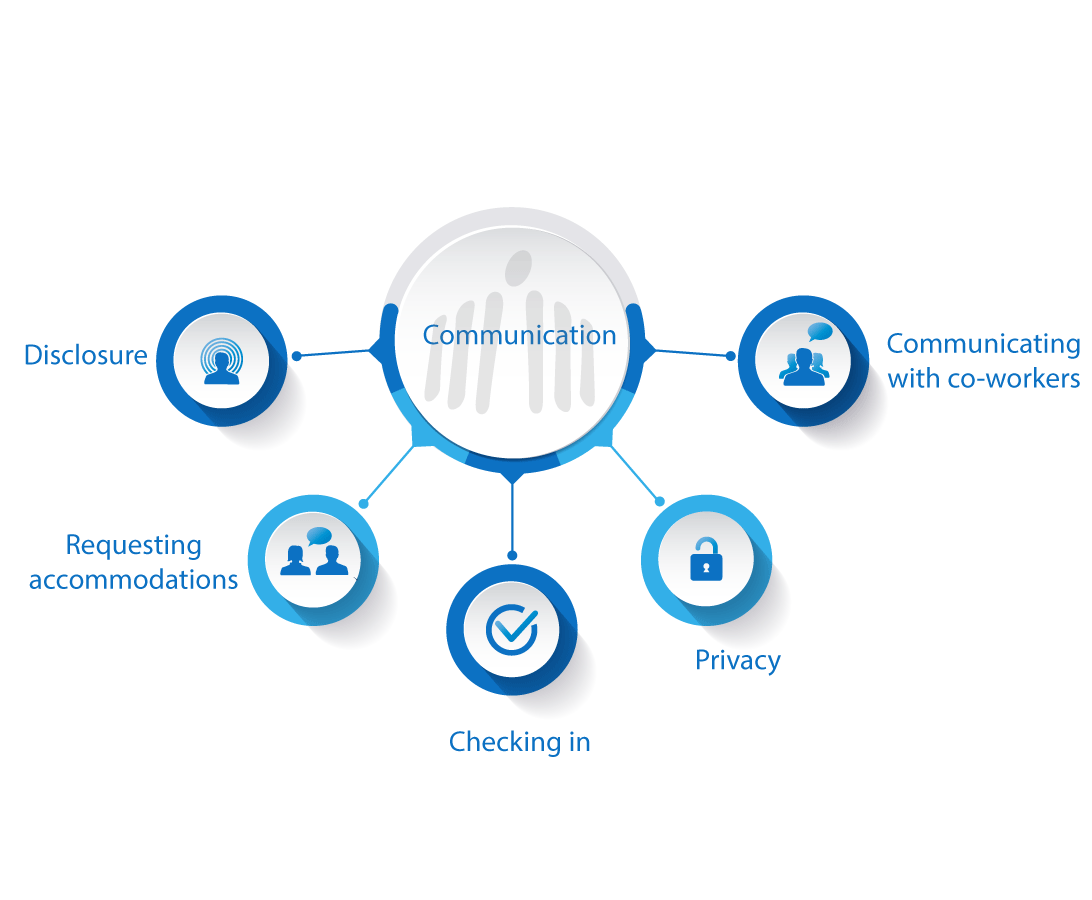Communication and Employees with Arthritis,
Joint Pain, and Back Pain
The Basics
Communication and employees with arthritis, joint pain, and back pain
There are five “communication moments” relevant for employees with arthritis, joint pain, and back pain:
- Disclosure
- Requesting accommodations
- Checking in
- Privacy
- Communicating with co-workers
Communication is about creating workplace well-being. Each of these communication moments is part of effective communication and can contribute to how supported employees feel in their workplace.

Why is communication important?
Evidence shows that people who have early access to health and wellness supports tend to have a better trajectory and outcome than people who don’t. Prevention and impact limitation strategies are important for both employees and employers – but where does communication fit in?
Communication is part of all points in the journey. We know that employees with arthritis, joint pain, and back pain have better work outcomes the earlier they can access available supports. We also know that supports can be diverse and include everything from formal and informal workplace accommodations, to simply feeling that employers and co-workers are providing a supportive culture. Enabling access to timely and appropriate support is vital, but how do we know that we are communicating the information that people need when they need it? Do we know what information they need (whether an employee, co-worker, manager, or leader/decision-maker)?
Reflecting on existing communication strategies in your organization, identifying what is great, what is good, and what might need a nudge in the right direction is how we recommend you get started on a high-quality communication strategy.
Work disability can occur early in the disease progression for employees with rheumatoid arthritis (RA) or other forms of inflammatory arthritis. Therefore, to reduce work disability or other work disruptions (e.g., increased sick time, absenteeism, presenteeism) prevention needs to occur as early as possible.
Did you Know?
18% of employees with RA leave work within 5 years of diagnosis, 27% within 10 years (Lacaille, 2019).
Where to Start
The next section, Benefits of Effective Communication, provides advice on how to get started with a review of workplace communication and to make decisions about what to do next. It also provides guidance on key issues that we know are important to employees who have arthritis, joint pain, and
back pain.
The next sections will provide more detailed information on health-related communication:
